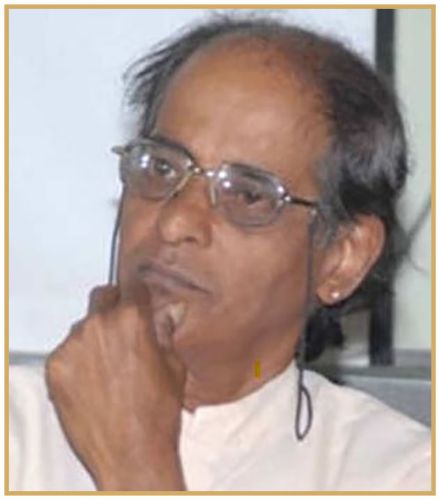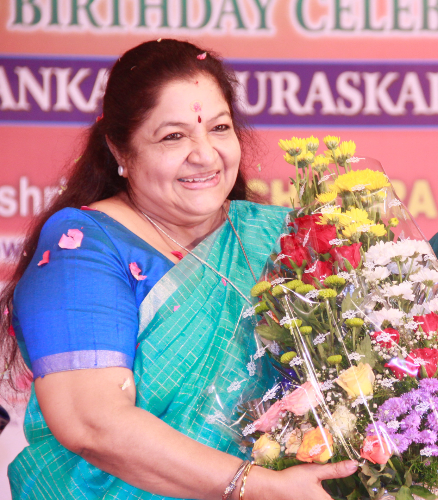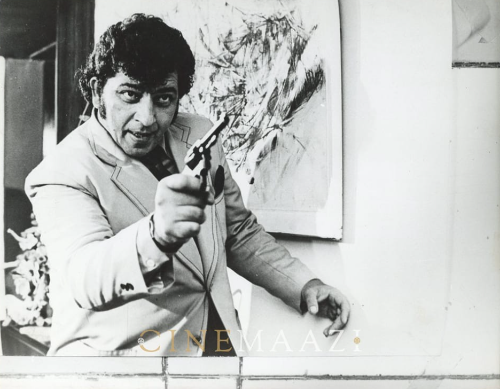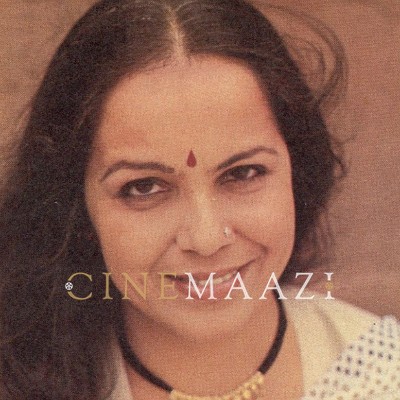S Ramachandra

Subscribe to read full article
This section is for paid subscribers only. Our subscription is only $37/- for one full year.
You get unlimited access to all paid section and features on the website with this subscription.
Not ready for a full subscription?
You can access this article for $2 , and have it saved to your account for one year.
- Real Name: Shivaramaiah Ramachandra Aithal
- Born: 16 November 1948 (Kota, Udipi district)
- Died: 10 January 2011 (Bangalore)
- Primary Cinema: Kannada
One of the topmost cinematographers, S Ramachandra was one of the pillars of the new wave cinema movement in the Kannada film industry. A National award-winning cinematographer, he, along with directors like B V Karanth, Girish Karnad, G V Iyer and Girish Kasaravalli, are considered the architects of the new wave Kannada cinema movement which took the Kannada film industry to heights during the 1970s. Entering the film industry as a cameraman in the 1960s, he worked in more than 75 Kannada and Hindi films apart from TV serials. He is known for his picturisation skills in films such as Yaadein (1964), Ghatashraddha (1977), Chomana Dudi (1975), Rushya Shringa (1976), Akramana (1979), Mane (1989) and the teleserial Malgudi Days (1986). He won the National film award for best cinematographer for the Kannada film Rishya Shringa in 1977. He won the best cinematographer award five times from the state government. In 2006, he was honoured with the Lifetime Achievement Award by the Karnataka State Film Awards.
Born Shivaramaiah Ramachandra Aithal on 16 November 1948 in Kota, Udipi district, he secured the fifth rank in the pre-university course, post which he joined the National Film and Television Institute in Pune to learn cinematography. He started work as assistant cameraman for U M N Sharif, who shot Vamsha Vriksha (1971) directed by Girish Karnad and B V Karanth.
It was during the shooting of this film that the Kannada writer-director P V Nanjaraja Urs, who identified Ramachandra's talent, asked him to work for his feature film Sankalpa (1974). This would be Ramachandra's first venture as an independent cinematographer. The cast of the film comprised Ananthnag, C R Simha, Bindu Jayadev, Saroja, Vishwanatha Shastry, Prof Shankar, Harina, and others.
He would later work with B V Karanth for the award-winning film Chomana Dudi. Based on a novel of the same name, written by K Shivaram Karanth, the film won the Swarna Kamal, India's National award for the best film. It won two more National awards as well as multiple Karnataka state film awards. This was apparently the first Kannada film to feature a reference to the demigod Panjurli.
Rishya Shringa (1976) which he cinematographed for director V R K Prasad, revolved around a prophesy by the local god that Balappa can solve the problem of a lack of rain in the village when a demon possesses the head-man. His work would earn him the National film award for best cinematography, as well as the Karnataka state film award.
Ramachandra's work in films directed by Girish Kasaravalli brought him accolades. His association with Kasaravalli began with the National award-winning film Ghatashraddha in 1977. A drama film, it revolved around a young Brahmin Vedic school student, who is from an aristocratic family. He befriends his school master's daughter who is a pregnant widow. The boy tries but fails in concealing his friend's pregnancy. The widow has an abortion forced on her, has the eponymous ritual performed on her and is excommunicated. The student returns home as his school shuts down.
Later he worked on the Girish Kasaravalli directorials Akramana, Mane, Kraurya, Naayi Neralu, Hasina and Gulabi Talkies. Akramana (The Conquest), directed by Girish Kasaravalli, starred Vijaya Kashi, Vaishali Kasaravalli, Padmashree and Chandrakumar Jain in the lead roles. A psychodrama, it revolved around its three protagonists, their struggle to break free from the limitations of family and tradition, and the ultimate acceptance of the realities of life.
Mane, the Girish Kasaravalli directorial, which he cinematographed, was made simultaneously in Hindi as Ek Ghar. It is a Kafkaesque tale about a young couple (Naseeruddin Shah and Deepti Naval) that moves to the city from a village with the hope of finding privacy and freedom, which are unavailable in the joint family system.
Kraurya (Cruelty), the drama film directed by Girish Kasaravalli, was based on a story written by T N Seetharam about an old woman who has to deal with complex relationships with people of different generations she is put up with. The cast includes Renukamma Murugodu in the lead role as Rangajji, and supporting roles played by Vishwas, H G Dattatreya and T V Gurumurthy. It won two awards at the 43rd National Film Awards - Best Feature Film in Kannada and Best Child Artist (Vishwas).
Naayi Neralu (2006), the Girish Kasaravalli drama film which he cinematographed, revolved around the plot of a widow meeting a young man who claims to be her husband, reincarnated.
Haseena, the 2004 film by Girish Kasaravalli, which he cinematographed, was based on the story Kari Nagaragalu by Kannada writer Banu Mushtaq. It looks at Hasina (Taara) who marries auto driver Yakub (Chandrahas Ullal) against his mother's wishes. The couple has three daughters - the visually impaired Munni, Shubby and Habeeb. Pregnant with their fourth child, the couple breaks social codes and does a pregnancy scan to ascertain the baby's gender. When Yakub realises it is yet another girl, he becomes at turns abusive and neglectful, eventually leaving Haseena to fend for herself. It won three National film awards.
The Girish Kasaravalli-directorial Gulabi Talkies, which he cinematographed, was based on a short story by the same name by Kannada writer Vaidehi. It revolved around Gulabi, a discarded 50-something woman, who is an outcast living on an island with the fisher folk. Her obsession for films is fuelled with the introduction of a television in her life and her village hut becomes a hub. The film premiered at the Osian's Cinefan Festival of Asian and Arab Cinema in New Delhi in July 2008, where it won the Best Film and Best Actress awards in the Indian Competition section. Umashree won the National award for best actress for her performance in the film.
Later he switched streams, to work in commercial films with directors like Nagabharana and K V Jayaram. His work in the realm of television won attention, particularly the popular serials Malgudi Days, and Swami and Friends (1991).
In his professional life, he was the president of Karnataka Cinematographers’ Association for nearly a decade, where he worked to secure the future of cinematographers of the Kannada film industry. He was also a founding member of Chitrasamuha, a filmmakers' platform for appreciation of cinema aesthetics and he remained an active contributor.
Shortly before he passed away, he worked in Bettada Jeeva (2011) directed by award-winning director P Sheshadri. This was perhaps his last film as a cinematographer.
S Ramachandra passed away on 10 January 2011 in Bangalore, following an illness. He was survived by his wife and two daughters. Chitra Varsha: Cinematography of Ramachandra, a year-long festival of his films was organised by Chitra Samuha and K V Subbanna Aptha Samuha in 2011.
Chief minister B S Yeddyurappa condoled his death, saying, “Ramachandra was a gifted cameraman who had worked in many national award winning Kannada films and successful Hindi tele serial Malgudi Days. He was equally at ease in filming black and white as well as colour films. In his death, the film field has lost a versatile cameraman.”
Filmmaker Girish Kasaravalli praised his oeuvre, saying, “’He was a force behind for offbeat films. It will be a great difficult to fill the vacuum created by his death. His death is a great loss to Kannada film industry,” adding that Ramachandra was the founding stone of the new wave of cinema, and worked enthusiastically with new directors. N Vidyashankar, festival director, Bangalore International Film Festival, pointed out, “He did not profess an alternate cinema openly but supported a large number of filmmakers to look for alternate ways of making cinema both in content and construction.” Noted cinematographer G S Bhaskar, said, “He remained dedicated to the cause of the new wave in Kannada cinema and was instrumental in positioning Karnataka on the world map of meaningful cinema. He facilitated many young filmmakers and first-time producers to meet each other on a common platform, willingly sharing his technical expertise and accumulated experience with them. Among the 70-odd films that he authored with his camera, he must have been responsible for no less than 40 debutant directors.”
References
https://web.archive.org/web/20121018002713/http://www.sify.com/movies/award-winning-cameraman-s-ramachandra-dead-news-kannada-lblsbVjhdgb.html
https://www.newindianexpress.com/entertainment/kannada/2011/jan/11/cinematographer-ramachandra-dies-218351.html
https://www.deccanherald.com/content/128146/s-ramachandra.html
https://kannadamoviesinfo.wordpress.com/2013/01/28/sankalpa-1973/
https://www.arthousecinema.in/2022/09/akramana-1979/
Image courtesy: https://timesofindia.indiatimes.com/topic/S.-Ramachandra?from=mdr









.jpg)


